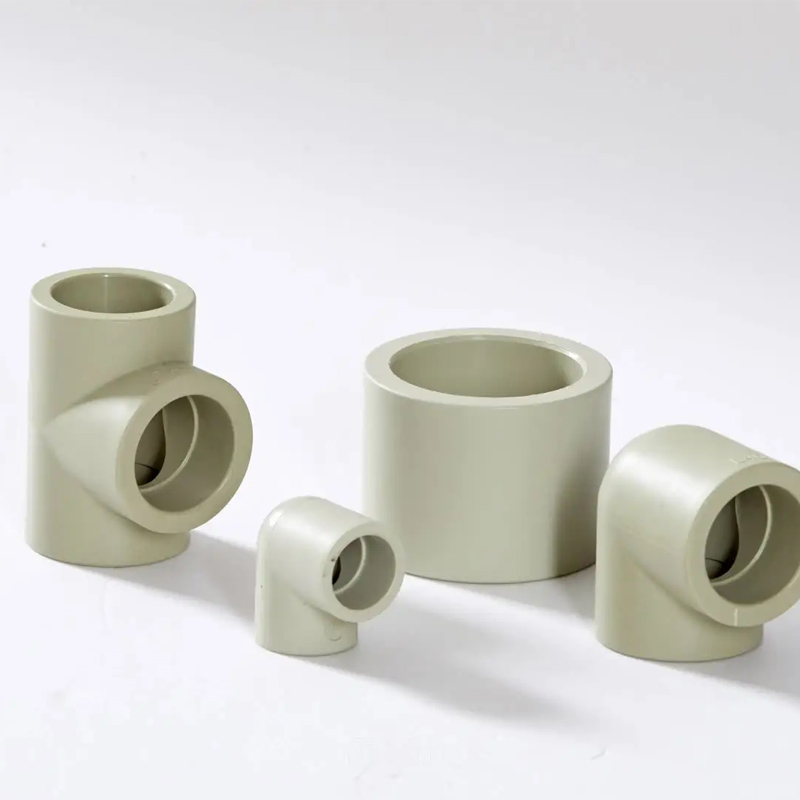Dec . 04, 2024 08:46 Back to list
HDPE Pipe Coupling Manufacturers and Their Innovative Production Techniques
The Role of HDPE Pipe Couplings in Modern Infrastructure
High-density polyethylene (HDPE) pipes have become a popular choice in various applications such as water distribution, sewage management, and industrial processes due to their resistance to corrosion, flexibility, and strength. As the demand for HDPE pipes continues to grow, the need for reliable and efficient couplings has emerged as a crucial aspect of modern infrastructure. This article discusses the significance of HDPE pipe couplings, the manufacturing process, and their impacts on various sectors.
Understanding HDPE Pipe Couplings
HDPE pipe couplings are fittings that connect two segments of HDPE pipes, ensuring a seamless and leak-proof flow of liquids or gases. These couplings come in various types, including mechanical couplings, electrofusion couplings, and butt-fusion couplings. Each type has unique characteristics suited for specific applications, making it essential for manufacturers to provide a range of coupling options.
Mechanical couplings are typically easier to install and are ideal for temporary connections or repairs. Electro-fusion couplings, on the other hand, use electrical resistance to weld the pipes together, creating a strong and permanent joint, highly resistant to pressure and environmental stress. Butt-fusion couplings are another reliable option that involves heating the ends of the pipes to be joined until they become molten and then pressing them together to form a strong bond.
The Manufacturing Process
The process of manufacturing HDPE pipe couplings involves several stages, starting with sourcing high-quality HDPE resins. Factories specializing in HDPE pipe couplings must adhere to stringent quality control standards to ensure that their products meet industry regulations. This involves testing the raw materials for purity and performance, as any defects can lead to failures in the field.
The manufacturing process typically employs advanced machinery and techniques to mold the couplings into various designs and sizes. Injection molding is a common method used to create couplings with precision and consistency. In addition, factories may utilize CNC (computer numerical control) machines for machining and finishing processes to ensure that the couplings have the correct dimensions and tolerances.
hdpe pipe couplings factories

After the initial molding, each coupling undergoes rigorous testing for durability, pressure resistance, and leak-proof functionality. The most reputable factories will also comply with international standards such as ISO 4427, which guarantees that their products are suitable for use in potable water applications.
The Impact of HDPE Pipe Couplings on Various Sectors
The availability of high-quality HDPE pipe couplings significantly impacts multiple sectors. In the municipal water supply sector, secure and durable couplings help prevent leaks, ensuring a consistent supply of clean drinking water. This is particularly critical in areas facing water scarcity, where every drop counts.
In the agricultural sector, HDPE pipes and couplings are extensively used for irrigation systems. The flexibility and weather resistance of HDPE materials make them ideal for transporting water over long distances, which is crucial for crop production. Efficient irrigation systems help optimize water usage, ultimately contributing to increased agricultural productivity.
Moreover, the industrial sector benefits from HDPE pipes and couplings due to their resistance to chemicals and high-pressure applications. Manufacturing processes that involve the transport of corrosive substances require reliable and robust piping systems, and HDPE offers a suitable solution that minimizes maintenance costs and downtime.
Conclusion
In conclusion, HDPE pipe couplings are a vital component of modern infrastructure, playing an essential role in enhancing the efficiency and reliability of fluid transfer across various applications. The careful manufacturing process, coupled with stringent quality controls, ensures that these couplings meet industry standards and serve their purpose effectively. As demand continues to rise in sectors such as municipal, agricultural, and industrial applications, the importance of high-quality HDPE pipe couplings cannot be overstated. By ensuring a safe and efficient flow of resources, these couplings contribute significantly to sustainable development and the advancement of infrastructure in our rapidly evolving world.
-
High-Quality PVC Borehole Pipes Durable & Versatile Pipe Solutions
NewsJul.08,2025
-
High-Quality PVC Perforated Pipes for Efficient Drainage Leading Manufacturers & Factories
NewsJul.08,2025
-
High-Quality PVC Borehole Pipes Durable Pipe Solutions by Leading Manufacturer
NewsJul.08,2025
-
High-Quality PVC Borehole Pipes Reliable PVC Pipe Manufacturer Solutions
NewsJul.07,2025
-
High-Quality UPVC Drain Pipes Durable HDPE & Drain Pipe Solutions
NewsJul.07,2025
-
High-Quality Conduit Pipes & HDPE Conduit Fittings Manufacturer Reliable Factory Supply
NewsJul.06,2025

